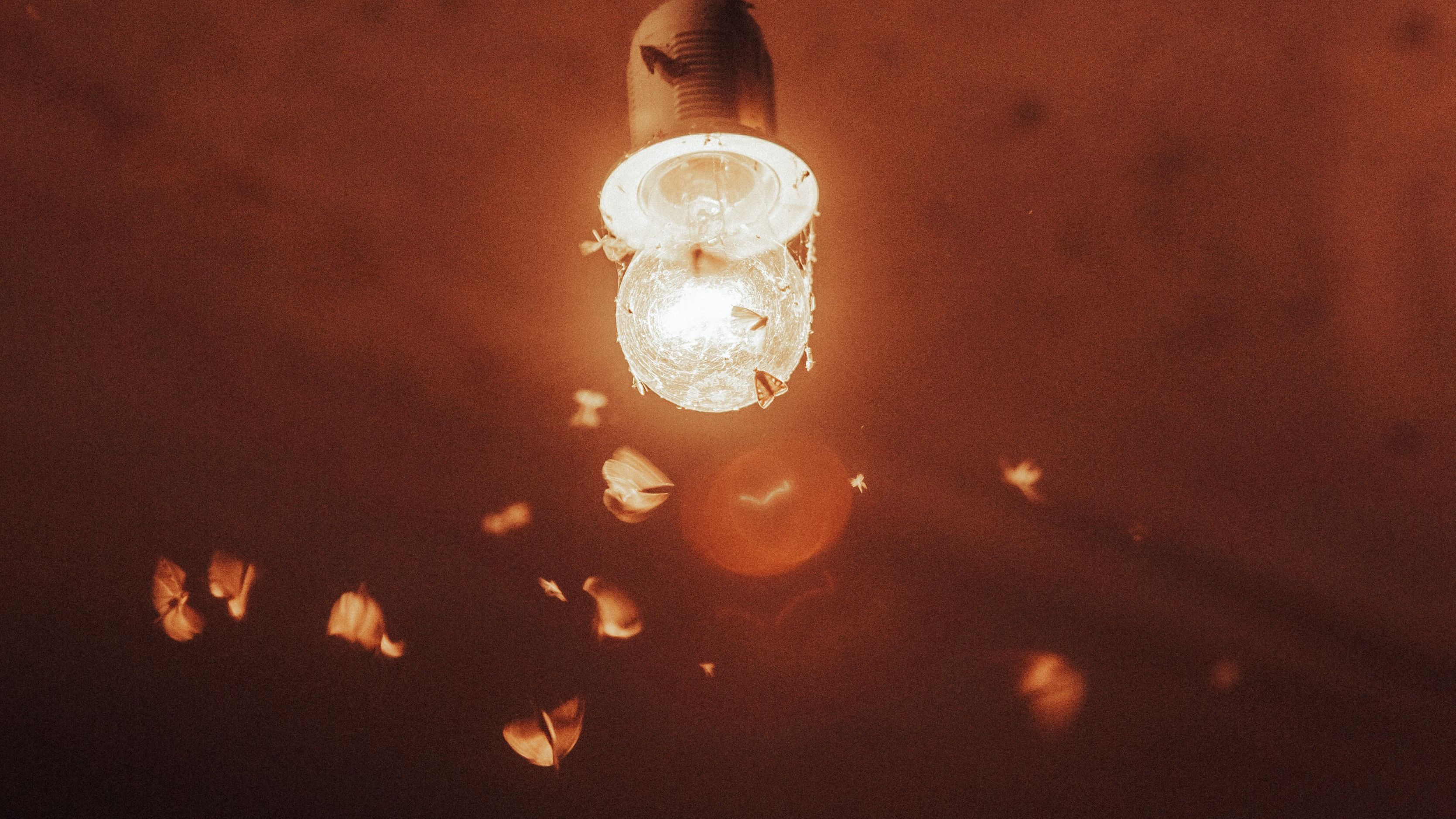High humidity, after a period of rain and hot weather, is the perfect scenario for light animals, also known as hallelujahs or seriris, to appear indoors. Usually, this happens before spring or even summer, when the insect—a species of winged termite of the order Isoptera—enters its reproductive stage.
Unlike mosquitoes, which appear in small groups or even alone, light bugs invade the home in flocks and, as the name implies, seek out lamps or other sources of artificial light. There, they spin until they “fall off.”
To avoid this nuisance, there are some good strategies for preventing winged termites from entering your home, without the use of pesticides. In a simple way, turn off the light and let the insect population migrate to another outpost, preferably far from your home.
Understand the winged termite reproduction process
When we think of termites, the first image that comes to mind is that of large, beaten-earth-coloured mounds of termites, dotting the fields like sculptures. The fact is that in Brazil there are about 300 species of this insect, some of which live in cities and breed in rotten wood.
Within the diversity of a single termite colony, there are workers, soldiers, and some machines (or cerires). These are the ones who will give birth to new colonies, future queens and kings – yes, the “social” build is different from other social insects, such as bees and ants, which are famous for their matrilineal systems.
In periods of rain and hot weather, “The termite breeding season is a true spectacle of nature, as males and females leave the colony in flocks (real swarms) in search of partners. It is very common to find them around lampposts (or any source of light)”, explains the article from wikitermsa scientific publication project on the world of termites, coordinated by Tiago Fernández Carrijo, Federal University ABC (UFABC).
Now look at the insects emerging from the termite mound:
In the process of finding the perfect mate, wings drop, termites find mates, and after settling into a new location, the first true dome occurs, and a new colony begins. In the future, as the community matures, new organisms will be born, causing the termite population to increase as other colonies form.
Why do insects circle around the light bulb?
For a long time, there was a consensus that winged termites or other flying insects “worship” light sources, such as an indoor light bulb. More recently, researchers from Imperial College London in England discovered that brightness is key, but because it acts as a guide for direction.
Thus, when insects find an outside light, it actually interferes with the control systems used to orient themselves in flight, leaving them “at a loss” as to which path to follow. That is why there are countless instances of them circling the bulbs, non-stop, like winged termites.

Most flying insects instinctively adopt dorsal behavior in response to light. Thus, he makes the upper part of his body – that is, his back – facing the side from which the glow comes.
Under normal skylight, tilt your back toward the brightest point of view [como a Lua] Helps maintain proper altitude and flight control. However, near artificial sources, this dorsal light response can produce a continuous flight around the light and trap the insect. [nessa rota sem sentido]say the researchers in the article published on the platform com. bioRxiv.
How to avoid light insects at home?
After understanding why bugs appear on hot days and learning about the insects’ general flight behavior, it’s possible to think of some strategies to contain winged termites indoors, ranging from basic to more “sophisticated” measures.
- At dusk and at night, keep the doors and windows closed when the lights are on;
- If possible, install screens on doors and windows, allowing air to pass through the house, while keeping winged termites and other insects out;
- If you identify cracks and edges, they must be covered;
- If the bugs are already in the house, it’s best to turn off the lights and leave the windows open so they can get out.
- Another possibility is to place a bowl of water under the lamp. Because of the light reflection, the termites mix and can fall into the tank.
Next, see how the insects change direction when the room lights go out:
Despite the inconvenience that subhanallahs, siriris, and other light-seeking flying animals can cause, it is important to say that they do not transmit diseases, bite, or cause irritation to humans. The biggest problem is where they settle and form their colonies, as they can multiply in wooden furniture, surfaces, or even in some appliances, and thus wreak havoc in the home.
source: wikiterms that it com. bioRxiv

“Hardcore beer fanatic. Falls down a lot. Professional coffee fan. Music ninja.”






More Stories
The law allows children and adolescents to visit parents in the hospital.
Scientists pave the way for the emergence of a new element in the periodic table | World and Science
Can dengue cause hair loss? Expert explains how the disease affects hair